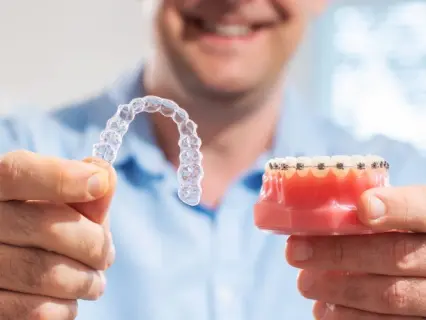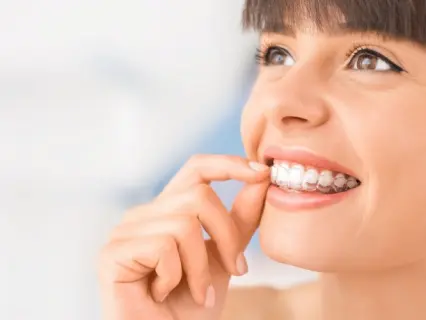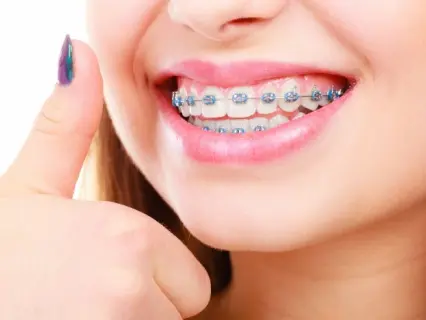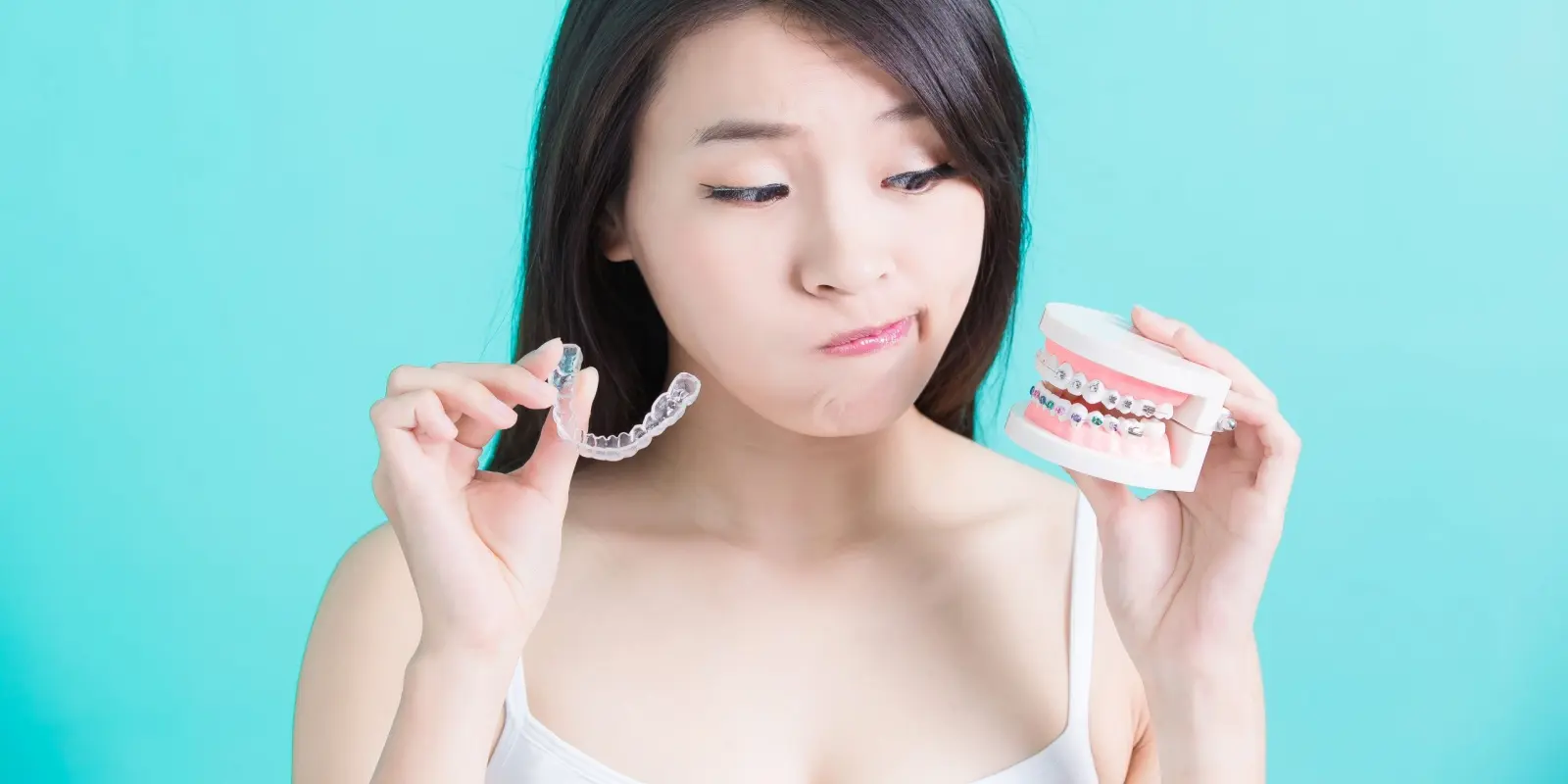Is There a Clear Winner?
Hearing the word “braces” often conjures images of brackets and wires. Invisalign has changed the field of orthodontia thanks to the treatment’s innovative clear aligners. While some patients are better served by metal braces, you might be surprised just how many people qualify for Invisalign – adults and teens – and you could be one of them.

Deciding Between Invisalign and Traditional Metal Braces
Both traditional metal braces and Invisalign do an excellent job of straightening teeth. Invisalign can correct the same problems as traditional metal braces – overbites, underbites, crossbites, and gaps. Severe alignment problems may require more in-depth treatment, and for that traditional metal braces might be recommended.
If you qualify for both metal braces and Invisalign, the way to proceed is largely a matter of preference. Metal braces have come a long way and are no longer as noticeable as they once were. Invisalign, of course, is the desirable option for many orthodontic patients. They want straight teeth but they want a discreet and efficient way to make it happen.
Here are some points to consider about Invisalign and metal braces as you or your teen prep for orthodontic treatment.

Invisalign Braces: Easy, Efficient, and Effective
Invisalign wearers are available for both adults and teens, though not everyone qualifies for this type of tooth alignment. If you are a good candidate for Invisalign, it’s time to get familiar with the ins and outs of this orthodontic treatment.
- Nearly invisible. The biggest reason people are drawn to Invisalign is the nearly invisible aligners that are customized to straighten teeth. Getting straighter teeth without drawing attention to your mouth is an innovation that’s hard to beat.
- No food restrictions. Unlike traditional metal braces that limit the eating of certain types of foods, Invisalign does not interfere with your appetite. The aligners are removed for all meals and snacks, meaning you can eat whatever you want, whenever you want. Just make sure you don’t eat or drink anything but water while wearing the aligners to avoid discoloration.
- Easy to clean. It’s easy to keep your teeth and your aligners clean when you wear Invisalign. Brushing and flossing normally is all that’s required of you – no special tools needed. Soak and clean your aligners as indicated by your Philadelphia Invisalign provider.
- Efficient treatment. Invisalign takes, on average, about a year to complete. The aligners move teeth a few at a time based on your personalized treatment plan which is determined at the start of your treatment. Traditional metal braces can sometimes take twice as long as Invisalign.
- Comfortable. It’s normal to experience some discomfort and pressure at the start of wearing each new set of aligners, but you can’t get straight teeth without any aches or soreness. You will, however, get used to the feeling of aligners, and they won’t get in the way of speaking or smiling. Invisalign aligners also eliminate the built-in side effect of braces – uncomfortable brackets and wires.
- Low-maintenance. Invisalign treatment demands a level of personal responsibility (which is why many parents prefer teens opt for traditional metal braces). You must wear your aligners 22 hours a day, clean them properly, and see your Philadelphia dentist regularly to ensure that your treatment is proceeding as it should. Ultimately, though, Invisalign is a low-maintenance orthodontic solution that lets you get straight teeth unobtrusively and in a non-invasive manner.

Traditional Metal Braces: The Sure Thing… Almost
It’s hard to argue with the effectiveness of traditional metal braces. They are a tried and true method of orthodontia and, some might say, a rite of passage for teenagers. But what if you want straight teeth as an adult? Traditional metal braces aren’t all that desirable, especially in your professional life.
Whether adolescent or adult, traditional metal braces have pros and cons to be considered:
- Reliable. Traditional metal braces are there for the duration. Your teeth will never have the chance to stop being straightened. For the less responsible orthodontic patient, removable aligners could be easily lost, broken, poorly cared for, or not worn properly, thereby interrupting tooth alignment and costing more to replace equipment.
- Versatile. Various colors can be chosen for the brackets and elastics of modern braces. Some teens embrace this colorful option, since if they’re stuck wearing braces they at least have an opportunity to be creative with the appearance of them.
- Uncomfortable. Discomfort is simply part of orthodontic treatment. Moving teeth and tooth roots will not be painless. However, metal braces have their own unique level of discomfort, mostly in the form of broken wires or brackets that pierce or scrape the gums, cheeks, lip, and tongue.
- Food restrictions. Invisalign wearers can eat whatever they want, whenever they want because the aligners can be removed. Wearers of traditional metal braces are limited in their food options – the sticky, chewy, crunchy stuff will all have to wait until the braces are gone if you don’t want to risk damaging the hardware in your mouth.
- Difficult cleaning ritual. It isn’t easy to keep teeth clean when you wear braces, and it’s not just because food is easily caught in the brackets and wires. It’s essential to meticulously brush and clean around the hardware – usually with a special brush – to ensure that your enamel stays clean and bacteria does not have an opportunity to damage your teeth.
- Visible. Obviously, one of the biggest differences between Invisalign and traditional metal braces is their appearance. Some people simply don’t want to be a metal mouth.
One element that Invisalign and traditional metal braces have in common is what comes after the treatment is completed. Every braces wearer – no matter what kind of braces – must wear retainers after their orthodontia is complete. All that effort to straighten teeth must be maintained.
Find out whether you qualify for Invisalign from your Philadelphia Gold Provider of Invisalign, Dr’s. Cirka, Jeon and Kim. After a dental exam, discussion of your goals and budget, and desired timeline for straight teeth, Dr’s. Cirka, Jeon or Kim will make their recommendations so you can achieve the straight smile you have always wanted. Contact Dr. Cirka, Dr. Mimi Jeon and Dr. Evan Ridge at Philadelphia Dentistry in Center City, Philadelphia, to make your appointment.



